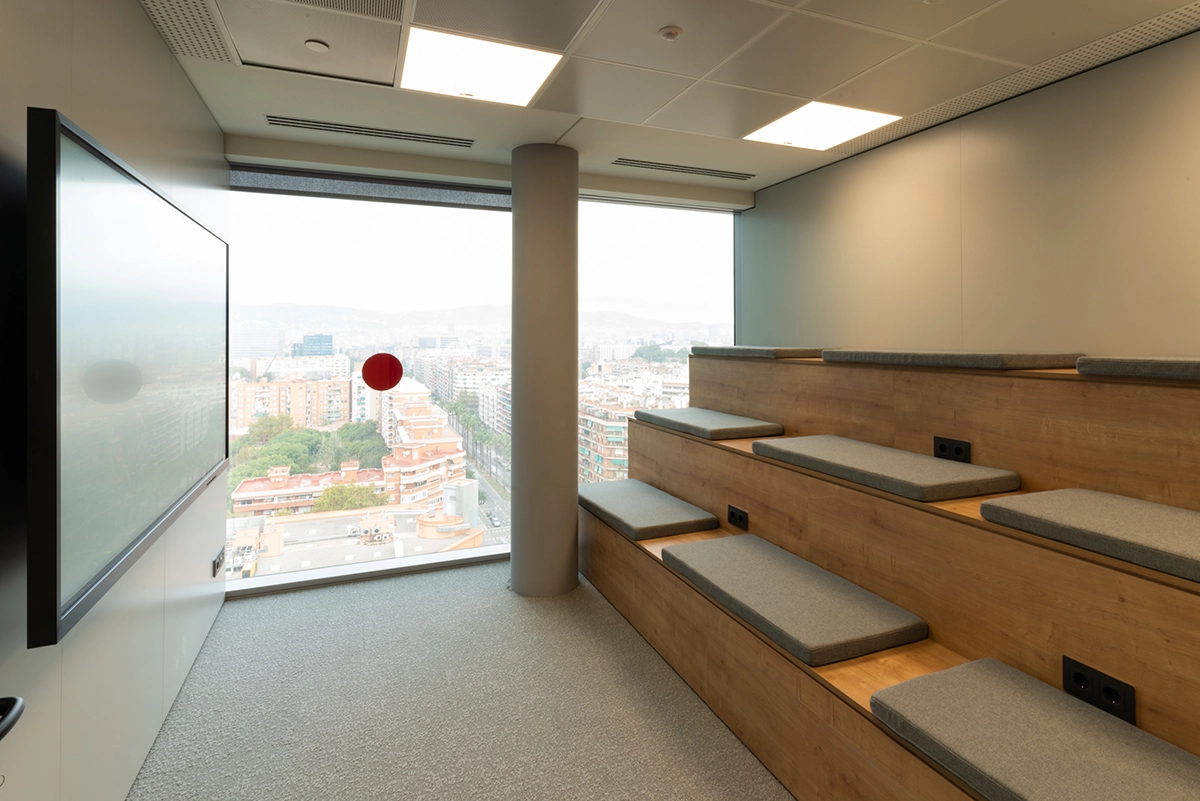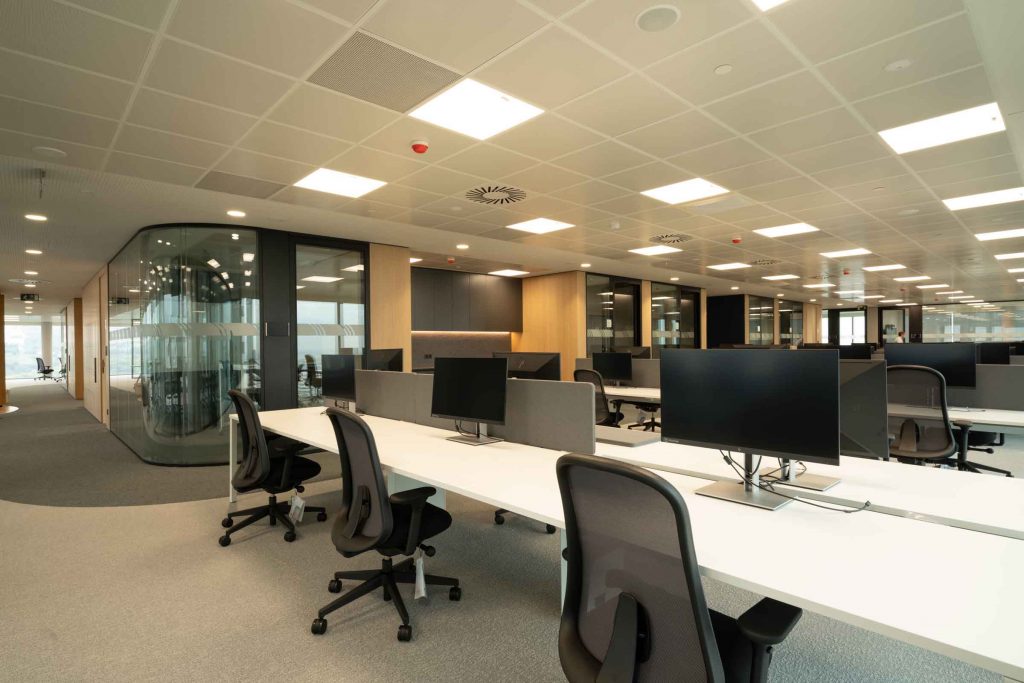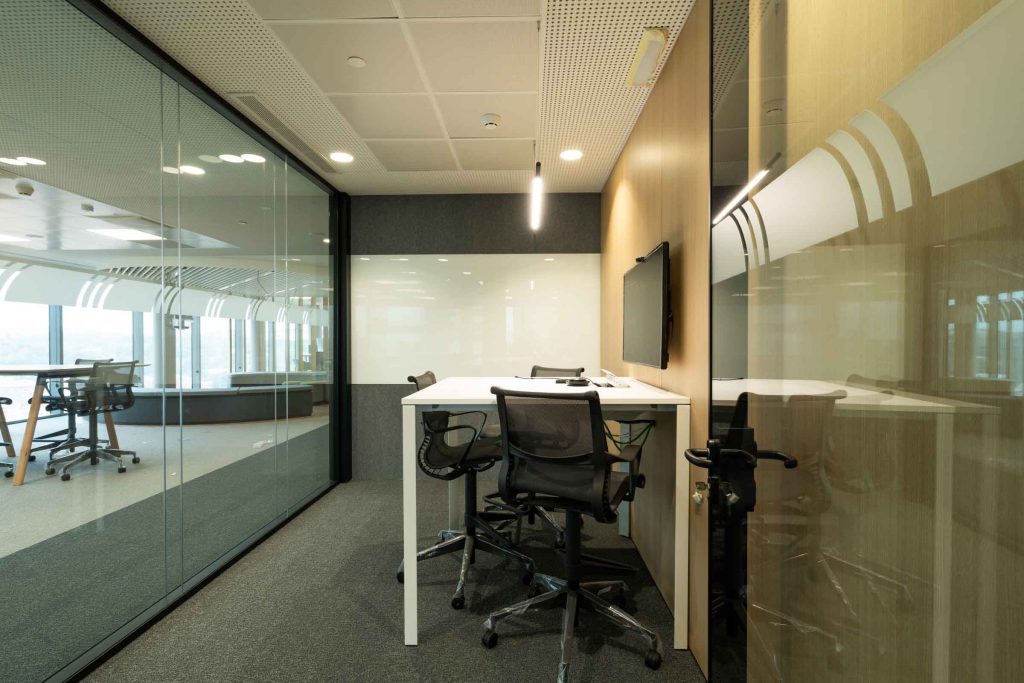Trends
Trends
APR
04
2023
Smart Services & IoT
The intelligent connectivity that has turned Torre Llevant into a smart office
When telecommunications infrastructure manager Cellnex decided to move its Barcelona headquarters into the Torre Llevant building in the heart of Barcelona’s new BCN Fira District, it was well aware that it would not only be moving people and equipment, but also knowledge.
The company, whose purpose is to promote sustainable and smart connectivity solutions, wanted to seize this opportunity to turn its headquarters into a comfortable, efficient and optimal environment from a social, economic and environmental point of view.

The building, which can boast consuming only green energy and having the highest architectural sustainability and well-being ratings, incorporates the smart solutions that have significantly helped to expand the company throughout Europe.
The offices are designed to facilitate collaboration, efficiency and opportunities for workers in an environment conducive to boosting their smart working business model. We can use technology to obtain real-time information and optimise the conditions of Torre Llevant users while rationalising the use of resources.
“When we moved into the Torre Llevant, we wanted to leverage the same technological solutions that we are currently implementing in our customers, solutions that provide benefits ranging from energy efficiency and improvements in operating costs to the rationalisation of spaces and resources,” explains Antonio Eroles Navarro in an interview. Eroles is in charge of Cellnex’s IoT & Smart Services business development department, which has implemented various projects for sensorisation and data management in public buildings, and even in social housing for vulnerable individuals.
To turn its offices into those dream spaces, Cellnex has installed almost 1,200 sensors on eight floors over a total area of 8,500 square metres, divided into 183 spaces and three floors for parking.
This unique IoT network continually collects data on occupancy and other elements that impact the monitoring of comfort levels and the interior environment. It is used for such things as smart temperature maintenance – even of fridges -, air quality control to maintain optimal levels of variables such as CO2, and water leak detection systems.
All this data from the sensors travels through several long-range and low-energy consumption networks such as Sigfox technology (UnaBiz) to a platform that collects and analyses data for decision-making.
The Sigfox network is a channel used to connect low-consumption devices through a long-range and low-cost radio network, which is nonetheless highly efficient in terms of communication between objects and smart building management.
With its minimal energy consumption, the system does not require an extensive roll-out or sophisticated installations. The sensors are wirelessly anchored to the wall with no need for power outlets, have a very high autonomy (their batteries last for years) and are easily adaptable to needs, with a large number of approved hardware providers.
The vital statistics that the sensors measure (temperature, humidity, CO2) are projected in various rooms of the building to facilitate digital decision-making on air conditioning, lighting, electricity, security or access control systems for more automated, efficient and safe management and control.
A trending reality
“The IoT has great potential in the smart management of property and facility management in general”, explains Manuel Álvarez, Managing Director of UnaBiz Spain, who feels there is a persistent misunderstanding about the difficulty of scaling these systems.
“There are many projects in the pilot phase, and very innovative solutions, but users are reluctant to deploy them because of the potential cost of the sensors. This was a problem in the past, but now there are numerous low-cost, wide-range alternatives, such as our 0G network, which is based on alternative standards and therefore does not require large infrastructure roll-outs, while reducing costs and energy consumption and facilitating the deployment of hundreds of sensors at very low cost and with minimal environmental impact.”
The mass IoT service provider UnaBiz acquired Sigfox in April last year during a period of expansion of applications for use in cities, industries, education and medicine. Buildings, which are the principal source of greenhouse gas emissions, could not remain unaffected by this trend towards rationalising resources.
“It is undeniable that IoT plays an important role in creating smart spaces. More and more cities, buildings and homes have the technology to improve people’s quality of life, cut costs and complete their sustainability strategies. The property and construction sectors undoubtedly face huge challenges in the coming years and must harness the IoT to continue transforming the sector”, concludes Álvarez.
Smart, home automation, building automation, urbotics… call it what you will, but that once-utopian vision of cities, work or living spaces improved by the interaction of objects is now a reality.



















